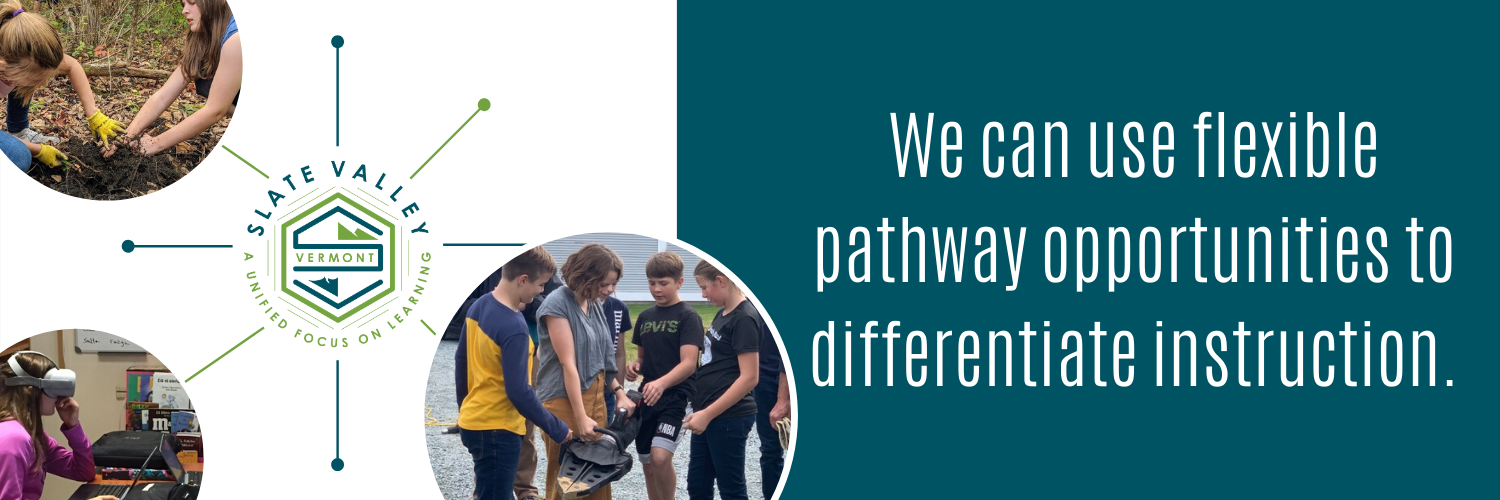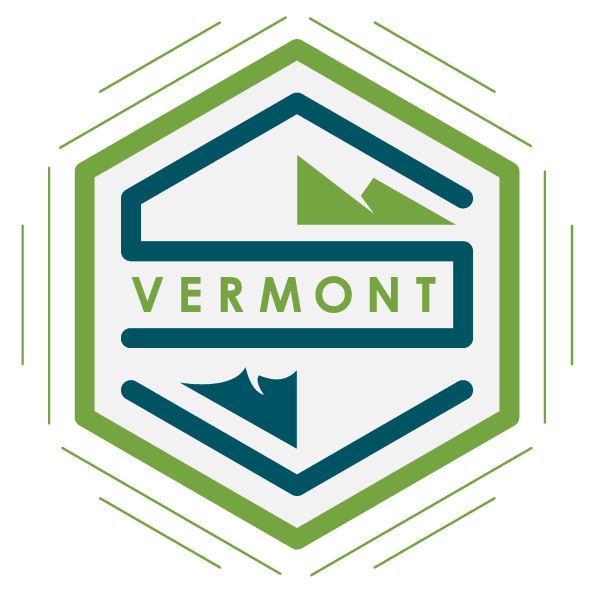
FLEXIBLE PATHWAYS
Any combination of high-quality expanded learning opportunities, including academic and experiential components, which build and assess attainment of identified proficiencies and lead to secondary school completion, civic engagement and post-secondary readiness. Flexible pathways allow students to apply their knowledge and skills to tasks of personal interest as part of the personalized learning planning process.
Career Technical Education
Designed to provide students with technical knowledge and skills that will prepare them for graduation, further education and enhance their employment options or may lead to an industry recognized credential. CTE is available to Vermont high school students through 17 CTE centers.
Early College
Full-time enrollment by a 12th grade Vermont student for one academic year in a program offered by a partnering college/university. Upon successful completion, students receive a diploma from their high school and college credit from the college/university.
Virtual Learning
Learning delivered through a web-based platform that employs a variety of digital tools, content, and supports and allows for student choice around time, place, path, and/or pace. Virtual learning can facilitate both individual and collective learning, and can occur synchronously and asynchronously.
Expanded Learning
High quality programs within communities and schools designed to serve learners on a regular basis by providing unique opportunities for academic growth, hands on learning, and personal development. These opportunities can occur beyond the traditional school hours and outside the school building.
Work-Based Learning
Experiences in which students can interact with industry or community professionals in real, virtual, or simulated work environments that expose learners to post-secondary options, provide opportunities for skill development, and allow students to reinforce their school-based learning.
High School Completion Program
Designed to offer a flexible pathway to those at least 16 years of age and at risk of disengaging from school, the HSCP provides learners with educational services of the scope and rigor needed for the attainment of a high school diploma. HSCP is managed by local Adult Education and Literacy providers in connection with a student's assigned high school.
Community-Based Learning
A program that combines meaningful service to the community with a student's learning goals. Students apply what they learn in school to a valuable, significant, and necessary service in their communities.
Dual Enrollment
Enrollment by a high school student in a credit-bearing course offered by a college/university. Upon successful completion of the course, the student will receive credit toward graduation from their high school and college credit from the college/university.
EXPERIENTIAL LEARNING
We have been learning experientially (by doing) our entire lives. We learned how to walk by practicing, reflecting, understanding, and repetition - without anyone telling us how to do it. We did it naturally. No matter what we are learning, we can learn to do it through experiential learning experiences.
PLACE-BASED LEARNING
According to Tom Vander Ark and his team at GettingSmart.com,Place-Based Education (PBE) is an approach to education that takes advantage of geography to make learning authentic, meaningful and engaging for learners. PBE is defined as an immersive learning experience that “places students in local heritage, cultures, landscapes, opportunities and experiences–using these as a foundation for the study of language arts, mathematics, social studies, science and other subjects across the curriculum” (2019).
Here is an example of a place-based (expanded) learning opportunity.
Next: Additional Resources
